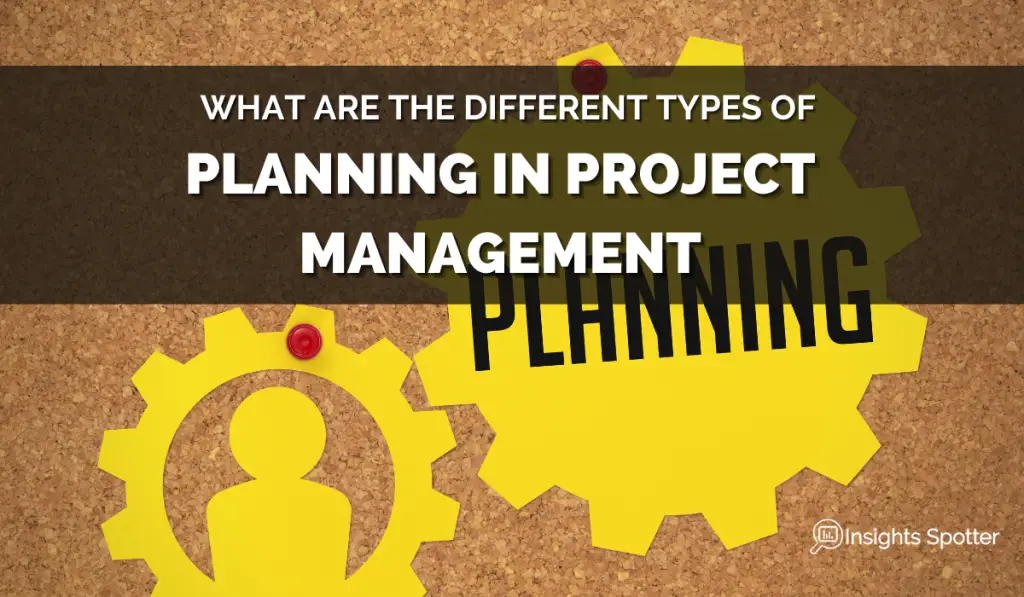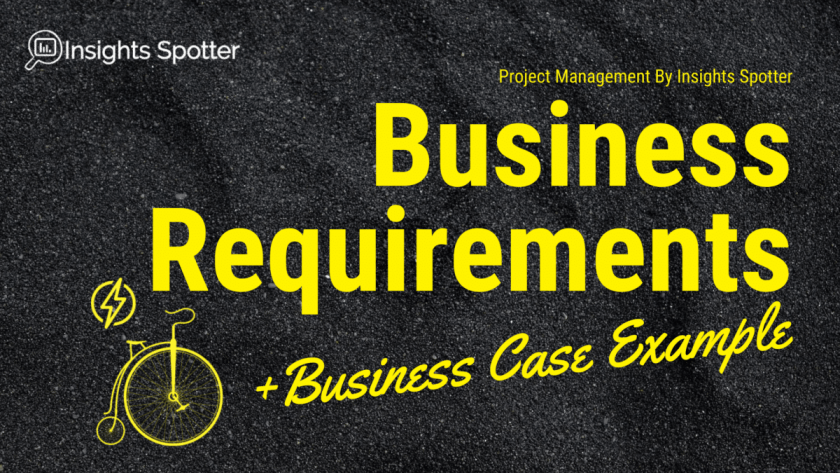Why are Business Requirements Important For The Project’s Success?
All projects operate in a business environment; thus, project management teams must first meet business requirements. Sure, projects need to create a product at the end, but the designed solution (even a very fancy one) will not do well if not integrated with the business.
Business Requirements describe what specific problems the project needs to address or opportunities to explore for the organisation. These requirements would highlight particular constraints the project needs to address before implementing solutions to fit the current business operating environment.
Requirements are documented in the famous Business Requirement Document (or BRD). The project team will use BRD in a Business Case (the document that captures reasons for the project) or Statement of Work (SOW), highlighting the business’s benefit and how the project links with broader business objectives.
I will split various business requirements later in the post with examples from the business case. I will also introduce an example case study, Two-Wheels, to make it more interesting. But first, let’s understand what these business requirements are.
Business requirements are not Solution or Stakeholder requirements and will not discuss the solution’s functionality. If you want to learn more about Functional and Non-Functional requirements, check out my extensive post on the subject.
Business Requirements Case Study “Two-Wheels”
Company Description
Bicycle manufacturer with the original name Two-Wheels is a medium-sized business based in the EU. There are around 50 staff members, including engineers, administration and sales staff. It is leading in recreational and city bicycles in the central EU. But they see electric bikes gaining popularity and would like to keep up with the trend. The aim is to have a 65% automated robotics line to assemble these new bicycles.
Project
The business has established a plan to address the increasing demand for electric bicycles. The project is at an early stage of exploration and feasibility. The project’s first step is to evaluate the business needs of the project and present them to the committee as a business case. The ultimate goal is to build and test the prototype in the market. If successful, continue with establishing an assembly line.
What Is Requirement Engineering?
Any project, or more broadly an idea, should have its “wish list”, and the more clearly understood, the higher the likelihood of success in the project.
In essence, requirements are the project’s goal and business; therefore, without them, you do not know if you are successful and when you have completed the project.
As a project manager and business analyst, you go through 3 stages of requirement processing:
- Requirement Elicitation,
- Requirement Analysis,
- Requirement Validation.
The business has finite resources and time. So, it is not enough to have a list of things you want to happen, but also need to categorise them and prioritise them from most to least significant at the end. Thus, the project team can concentrate on where it can give the most considerable value. In the post, we will focus on the categorisation of business requirements.
Starting of The Project In The Business Case
The business has assigned a new, experienced project manager to oversee the business expansion. Let’s call him Bob. Bob had loads of experience in his life, and he knows that it would be wise to start with the business requirement because if you start with product requirements, you might be wasting your time. If the solution does not integrate into the business well, there is no use of the solution, or it will be very costly, and profit margins will be lower.
How To Gathering Requirements?
Bob’s project team is ready and buzzing. He asked them to go and discover what business needs the project would address.
Naturally, a leading business analyst (call him Mark) will conduct interviews, research and workshops with key stakeholders to gather business needs (a.k.a. requirement elicitation).
Now, it is time to categorise them into a clear document to ensure it makes sense and the solution will combine well with business (a.k.a. Requirement Analysis). Later Mark and Bob will use requirements in Business Cases to get senior management approvals.
What Are the Types of Business Requirements?
Mark needs to consider two major types of business requirements:
- General
- Technical
What Are General Business Requirements?
General requirements deal with things like branding, safety legislation or internal policies. Some great examples would look like this:
- Legislative Compliance
- Project Constraints
- Transition Requirements
- Business Constraints.
Let’s look at what our business analyst, Mark, added for our Two Wheels bicycle company as part of each type.
Legislative Compliance: General Business Requirements
The EU has strict regulations on the health and safety of products. Therefore, the business must comply with statutory requirements for electric bicycles defined by EU legal bodies to avoid fines.
Project Constraints: General Business Requirements
As the project operates in the business environment, the business will have specific limitations.
- Timescale/Deadline: The business must complete the prototype by the end of 2020.
- Budget: Only allocating 50K to start the project. If the prototype is successful business is prepared to add 1M to build an assembly line.
- Methodology: Project will need to apply Agile + SCRUM methods as the final version of an electric bike is not clear.
- Standards Compliance: Finally, parts will have to meet industry standards.
Transition Requirements: General Business Requirements
The project is a finite endeavour in business with a specific start and finish date. When Bob closes his project, he will need to prepare any required documentation to hand over to the company as usual (a.k.a. BAU). In our business case study, we will need to give a full step-up manual for the assembly line, structural bicycle models, resources and suppliers document, and maintenance strategy of robotics equipment. When the project is finished, the business can continue to produce bicycles with no delay and confidence.
Business Constraints: General Business Requirements
The business needs to adhere to existing infrastructure, designs and policies. Thus, the project must ensure it follows the same guidelines. So, what are these:

- Look and feel: The project must ensure that branding colours and design mirrors current production bicycles. Let’s assume that the brand will have the following logo.
- Culture: As a company specialising in recreational cycling and city bikes, which represent culture; thus, the product needs to ensure that it fits well with the existing customer base.
- Policy and Standard Compliance: The business will have current policies on ensuring material quality; therefore, the project will need to consider these when thinking about implementation and continued operation.
- Performance: The final product will have to meet defined performance standards. Say, be able to go 50km without charge or similar.
What Are Technical Business Requirements?
Business Technical requirements look into existing technology and how the new project fits into it. Say a business already has a robotic assembly line with existing IT software which controls them.
Use of Specific Technologies: Technical Business Requirements
Assume Two Wheels would like to use acienta robotics only, as they purchased robots from them before, and executives can sign an excellent business deal. Thus, making a restriction for a project to only acienta offerings.
Interface with Other Systems: Technical Business Requirements
Finally, the business will have different methods already utilised. The new assembly line would have to integrate well into existing operations. Then there might be specific requirements that acienta will need to fulfil for a company like:
- The new line has to work well with parts produced by existing assembly lines. In particular, if the new solution will utilise some of the existing lines.
- Or data can be easily saved in existing databases.
Business Requirements Conclusion
I hope that gave you a good intro to Business Requirements. How they look and why they are necessary.
After reading the post, do you see some business requirements you should consider in your project or endeavour? Let me know below.
Would you include some additional elements as part of the business requirement, and why?
Subscribe to our newsletter!
 ABOUT ME
ABOUT ME
I am an experienced ex. Business & Data Analyst and now a Project Manager with multiple years of experience gained in several international companies.
These days, business problems require data crunching and telling stories to make the right decisions. Simply put, business stakeholders need insights into their projects and deliveries.
This is where I come in. I have learned and applied Python, Power BI, SQL and Excel to analyse and present data. Also, I gained experience in Project Management and Business Analysis. So, I can not only spot insights but execute business decisions. Moreover, I can teach you as well. Read More
Best Books








Latest Blog Posts
- Sustainable Project Management: Trends, Tools, & Strategies
- Unlocking Strategic Value: How NIST CSF 2.0 Shapes Project Choices for Better Outcomes
- Cybersecurity Project Management: Protecting Your Digital Frontier
- What are the Different Types of Planning in Project Management?

- Transforming Project Management with AI Software: Tools, Challenges, and Best Practices
- Unlocking the Benefits of AI-Powered Project Management
Need Project Manager’s Help!?
Check out the Fiverr marketplace if you do not have time to run your own projects or just need extra help. They do have multiple project professionals, including project managers. Maybe you will find just the right fit to take some burden from you. I have used Fiverr in the past. The prices are also not too bad. If you seek PM via the corporate route, it will be easily 5x the price.

